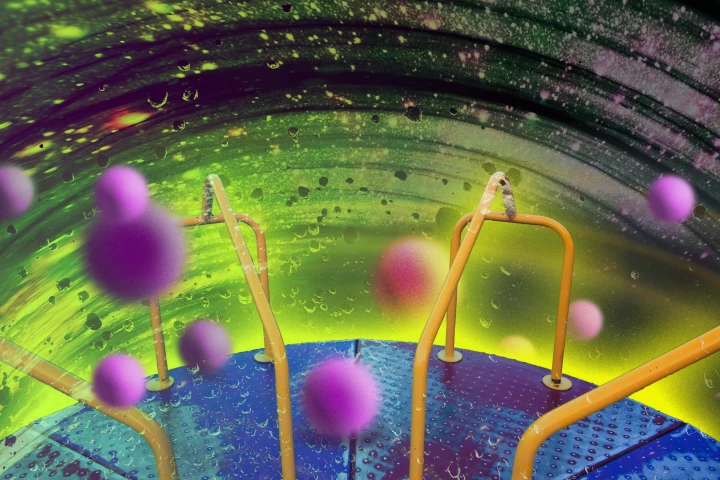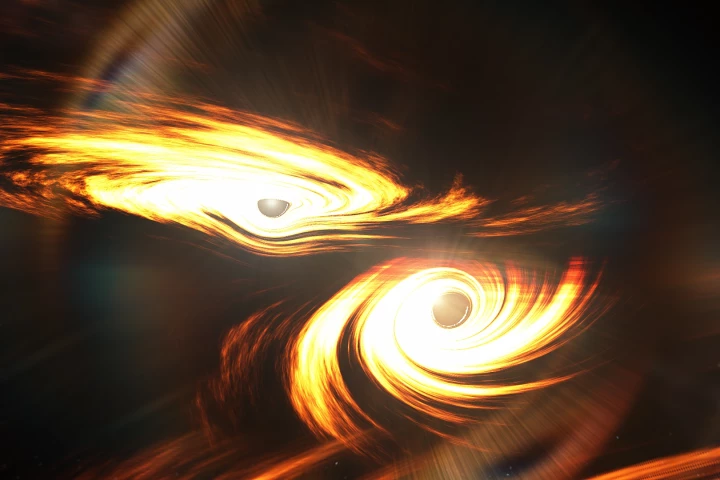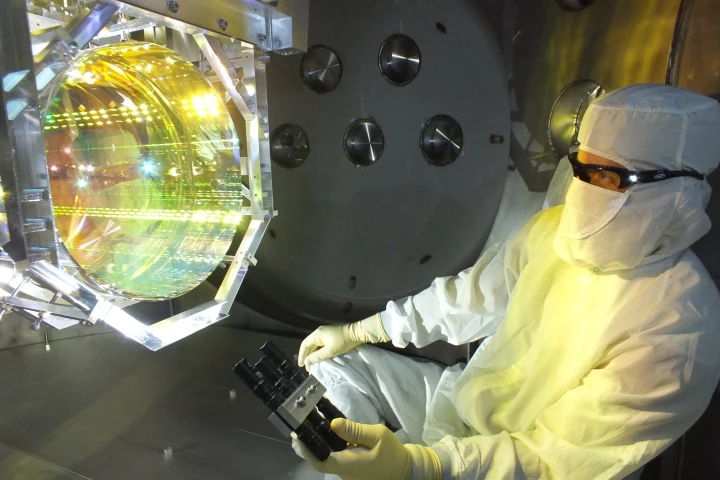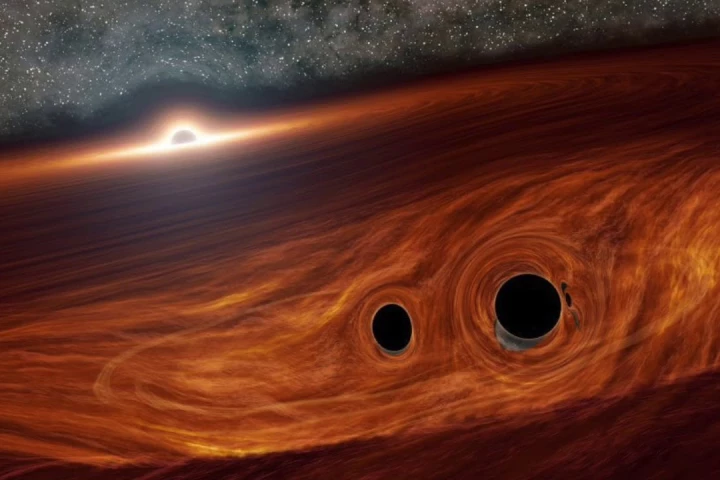gravitational waves
-
Astronomers have detected the final piece of the gravitational wave trifecta – a black hole swallowing a neutron star. Two separate events rolled in just days apart, with the black holes gobbling up the stars like Pac-Man rather than Cookie Monster.
-
With elusive dark matter continuing to evade detection, scientists are having to search in stranger and stranger places. In a new study, physicists at MIT have studied the spins of black holes for signs of drag from dark matter slowing them down.
-
In January scientists reported the detection of very low-frequency gravitational waves. Now astrophysicists have investigated two possible sources – the universe cooling down after the Big Bang, and a field of particles that could be dark matter.
-
Last year gravitational waves were detected from a massive black hole collision. But now astrophysicists propose a new explanation: a collision of two boson stars – hypothetical, invisible objects that could help untangle the mystery of dark matter.
-
The gravitational waves we’ve detected so far have been like tsunamis in the spacetime sea. Now, a 13-year survey of light from pulsars scattered across the galaxy may have revealed the first hints of gentle gravitational wave background signals.
-
The LIGO and Virgo Scientific Collaboration has detected gravitational waves coming from the most massive black hole collision that it's ever recorded. The end result created a gargantuan black hole that belongs to a new class.
-
Classical physics describes how large objects and systems work on an everyday scale, while quantum physics describes the “spooky” subatomic world. Now scientists have observed a rare crossover where a quantum fluctuation affected a macroscale object.
-
Astronomers have observed a bright flash of light from space, which appears to have come from a collision between two black holes. And that’s surprising, considering that black holes are famously dark objects.
-
The LIGO-Virgo collaboration has reported a very strange gravitational wave signal. This signal appears to have come from a black hole swallowing some unknown object, with a mass that sits in a range thought to be empty.
-
For the first time, scientists have managed to pick up higher harmonics in gravitational waves. After a round of upgrades The LIGO and Virgo gravitational wave detectors have extended their range, revealing new details about the events behind them.
-
Equal amounts of matter and antimatter should have been created in the Big Bang, but this would just have annihilated itself. Now, physicists have proposed a new theory that explains the mystery – and outlined how we can find direct evidence of it.
-
The LIGO collaboration has announced the detection of gravitational waves from a pair of neutron stars colliding. This marks just the second time ever that this kind of event has been spotted, as the smash-up sent ripples through spacetime itself.
Load More











